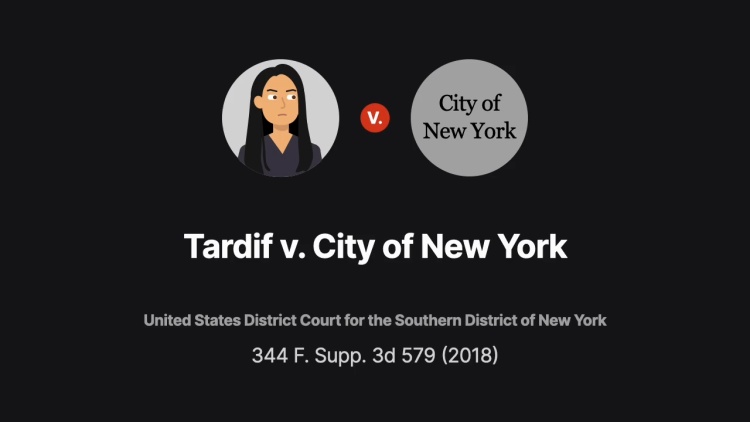Tardif v. City of New York
United States District Court for the Southern District of New York
344 F. Supp. 3d 579 (2018)

- Written by Kate Douglas, JD
Facts
Mary Tardif (plaintiff) sued the City of New York (city) (defendant) and several police officers (defendants) for injuries, including post-traumatic stress disorder (PTSD), which she allegedly sustained at the hands of New York police during the 2012 Occupy Wall Street protests. Tardif retained Dr. Robert Goldman as an expert. Although Goldman was a licensed psychologist and held an advanced psychology degree, Tardif adduced no evidence that Goldman had specific expertise in PTSD. Goldman reviewed some of Tardif’s medical records, interviewed Tardif, and administered the Millon Clinical Multiaxial Inventory-III test (MCMI-III) to test the level of Tardif’s personality functioning. Goldman concluded that Tardif had PTSD from prior trauma but opined that the city and the officers’ 2012 conduct exacerbated the PTSD and was the cause of Tardif’s current condition. Goldman did not conduct a differential diagnosis to rule out other possible causes of Tardif’s PTSD. Portions of Goldman’s report simply recounted Tardif’s version of her personal history. The city and the officers retained Dr. Steven Fayer as a psychiatric expert. Like Goldman, Fayer reviewed medical records, examined Tardif, and administered the MCMI-III test. Fayer found that Tardif exhibited no PTSD symptoms. Fayer did not conduct a differential diagnosis. Each side moved to exclude the other side’s expert’s testimony.
Rule of Law
Issue
Holding and Reasoning (Wood, J.)
What to do next…
Here's why 899,000 law students have relied on our case briefs:
- Written by law professors and practitioners, not other law students. 47,000 briefs, keyed to 994 casebooks. Top-notch customer support.
- The right amount of information, includes the facts, issues, rule of law, holding and reasoning, and any concurrences and dissents.
- Access in your classes, works on your mobile and tablet. Massive library of related video lessons and high quality multiple-choice questions.
- Easy to use, uniform format for every case brief. Written in plain English, not in legalese. Our briefs summarize and simplify; they don’t just repeat the court’s language.





